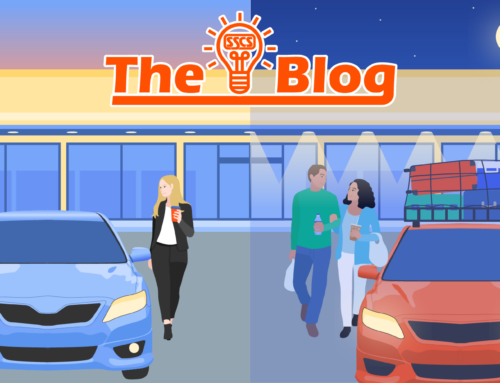The SSCS Interview: Mark Johnson CEO of Loyalty360 — Part 2
If you missed part 1 of this interview, which contains an introduction that explains the focus of Loyalty360™ and an explanation of the new loyalty and branding model espoused by the organization, please click here.
SSCS: Why are retailers being forced to confront a more holistic approach to brand and customer loyalty strategies than they have in the past?
MJ: There are a number of reasons. Point/reward based programs were extremely successful when they were introduced, and many continue to do quite well. The problem is, they became so pervasive that restaurants, C-stores, airlines, etc. felt obliged to offer them to stay competitive. It wasn’t an effort to get ahead of the competition as much as it was something to keep them from losing ground.
Eventually a tipping point was reached. The consumer became inundated with offers and value propositions. Amid all the noise the traditional approach lost much of its impact and its limited ability to predict and adapt to customer behavior became exposed, too. New tools were needed and they were soon identified, but they came with their own complex set of challenges.
Data mining, targeted e-mail campaigns, social media and mobile platforms are all part of the answer, but what they reveal about customer behavior is difficult to knit into an overarching picture. They are different channels with different attributes. They reveal different aspects of the customer. Their use requires different disciplines. It becomes a challenge especially if you are an older bricks and mortar institution—say a bank—that might not even think to communicate with their customer service department to help draw an accurate picture of its customer base.
There’s a fundamental discrepancy at play here, because a customer loyalty program should make understanding the customer simple. Yet this overlay of complexity is needed to achieve that goal. Businesses need help, something we’re trying to provide.
SSCS: What are the unique challenges you see in the C-store/petroleum retailing market in terms of building brand loyalty?
MJ: The industry is fiercely competitive, and the rapid rate of consolidation adds a large wrinkle to the mix. One corporation sells multiple sites to another corporation, and everything suddenly changes: staff organization, store layout, you name it. Much energy and attention is spent on these concerns, and the organization’s focus can’t help but become diluted. From a loyalty standpoint, one of the most critical issues is potential change in the perception of the customer by the organization. Continuity is easily lost, and continuity is essential to making a lasting connection with a customer.
In these types of corporate/franchisee relationships, often times the store owner—the one who is closest to his or her customers and may have the most profound insights on how to engage them—may have difficulty getting the ear of the corporation. Likewise, a corporation that does customer loyalty well can find it difficult to get individual store owners to modify their approach to improve it. There’s a distance between the two that can obfuscate or otherwise distort the message needed for customer engagement. We can’t afford to forget that happy customers tend to be happiest when they perceive they are controlling the brand conversation and its direction. In the franchise setup, they may feel their voice is being not being heard adequately due to other organizational priorities.
There is a tradition of rewards programs firmly in place in the retail petroleum market, and many work well. But how significant they are to a fuel retailer looking to increase share of wallet, even incrementally, is open to debate. Is a point-based program really going to make one petroleum retailer top of mind over another? Can the program be modified to address the additional complexity in the market? These are the most pertinent questions for this particular market.
SSCS: When you talk to companies about new customer loyalty approaches, do you notice common stumbling blocks in the comprehension of these concepts?
MJ: It seems basic, but most companies struggling to engage their customers have forgotten they need to listen. Sure a lot of new channels are evolving, but at their core they should assist the retailer in listening more effectively to customers, whether through two-way electronic conversation or insights about behavior gleaned through advanced metrics. You need to know your customer base to effectively market to them. What better way to do that than to listen effectively?
Of course, if it was easy, everyone would do it well. Consumers tend to be irrational so some of the things they tell you may not strictly reflect what they want or what they are going to do. The right combination of tools and methodologies can account for these behavioral variables, but they come with their own obstacles. They need to be understood and mastered, and for that task dedicated staff is best. But many operations, especially smaller mom-and-pop type stores, don’t have this luxury. The metrics of investment in these types of tools—a quantifying or returns—can be mysterious to them, as well.
Despite these complexities, the leaders in the field do account for human irrationality and adjust their strategy to identify the customer successfully and what really engages them outside of finite, fixed rewards metrics. It takes a broader approach to fortify a brand in the consciousness of the consumer, but it’s being done every day and it can be replicated. You just need the right information and the proper support system, and if we, at Loyalty360 can help we’ll be on the way to fulfilling our mission.






Leave A Comment